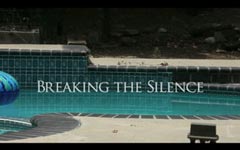Nonspeaking does not mean non-thinking. That’s my mantra. Nonspeaking may be caused by motor issues. That’s my message. Motor issues do not cause stupidity. That’s my point.
Being locked internally because of motor issues is not the same as a language processing problem and should not be treated as such.
There is an overwhelming need for professionals to learn about autism from those who live it and can describe it in words. I am referring to the nonspeaking typer who tries to explain autism from the inside out. There are now quite a few of us, and the number is growing. Our messages are always the same. Intact mind/disobeying body. Smart head/dumb body. Thinking mind/non-thinking motor system. Not speaking is not the same as not thinking.
In the six years since my first book, Ido in Autismland, was published, only one researcher ever contacted me to learn about autism from me. That’s kind of pathetic, if you think about it. I’d like to help guide their research based on my real symptoms to help improve treatments and theories. A fair skeptic and an inquiring scientific thinker might take the time to meet a proficient typer, to ask questions, to learn about their journey to increasing fluency. But they don’t, for some reason.
All this is due to the 3 P’s that preoccupy the skeptics. Proofs, prompts and presumption of competence (or lack thereof).
Proof
In ASHA’s response to my editorial, they say they need testing proof before they can entertain the possibility that RPM might have any validity. This intrigues me for a couple of reasons. There is a need to validate claims and I think we all recognize that, but there is more than a single way to get data. Observational data and longitudinal studies, including film, would be one way. Another would be well-designed studies that factor in the motor and anxiety issues people with autism describe. Without doing so, there is a significant chance of a poorly designed study producing skewed or incorrect results.
Have there been studies and internal reviews in the so-called “evidence-based” autism treatments, such as ABA and speech therapy, as to why a significant number of nonspeaking people struggle to progress using these evidence-based methods? It is too easy an out to say progress doesn’t occur because the person is “low-functioning.” If that’s the case, it doesn’t take ten years of costly treatment to find out. On the other hand, some so-called “failures” of evidence-based treatments go on to become successes, as I did, when the treatment adequately addresses the motor issues impeding performance.
Prompts
In ABA the prompts are constant, duly noted in logbooks. In speech therapy the prompts are constant too. There are prompts in PECS, Adaptive PE, in school, in every moment, in every treatment, every day of an autistic kid’s life.
RPM uses prompts too. No surprise really. The acronym stands for Rapid Prompting Method. But the prompts do not consist of motoring someone. People are moving their own arm independently. The prompts are to look, to scan an array of letters, to reach far enough, to help someone gain skills in motor precision and in hands and eyes synchronizing for the purposes of communication. Beginners get lots of prompts. Fluent people get few, and mostly just type, though someone may say “keep going,” or someone may hold a letter board steady. As skills improve, prompts go down. Why are prompts acceptable in every autism treatment except touching letters for the purposes of communication? It’s illogical. And it’s all due to this issue:
Presumption of Competence
Well, you can either presume I’m incompetent or competent. I prefer the latter.
There are two philosophies guiding much of autism theories and education. In one there is no presumption of competence. Rather, the nonspeaking individual is determined to be low-functioning intellectually and not properly processing human speech, thus requiring simplified lessons and constant drilling. This is the prevailing theory.
In the other, there is a presumption of competence— that is, an intact mind may be buried behind a messed up motor system caused by neurological factors. Therefore, if the person is taught to move properly to point and spell words, that person may learn to express thoughts and potentially get a more normal education. Many, once thought to be hopeless cases, have proven that, like books, they shouldn’t be judged entirely by their cover.
That has been true for me and for many, many others. That is why I wrote my editorial, my blog and books. The professionals who insist they speak for science too often ignore evidence that may intrude on their theories, but facts will out. There are more typers each day, and once someone has a voice, he or she wants to speak out.










